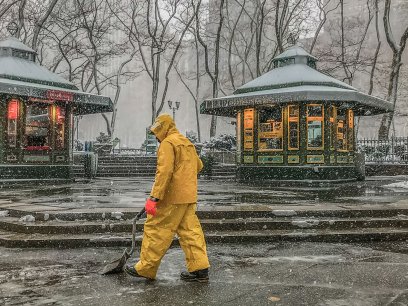
This Super Bowl Sunday, take a page out of Minneapolis' playbook! Super Bowl LII (52) will take place at Minneapolis' US Bank Stadium, a $1.129 billion stadium built in 2016 and owned by the state of Minnesota. This publicly-owned stadium continues the recent trend of highly sustainable Super Bowl venues, seen in recent years at the state-of-the-art Levi's Stadium and NRG Stadium.
This year is special in that the majority of the measures taken at the stadium are ones that fans can implement at home, oftentimes without needing to implement costly new technology. Read on to learn more about how you can bring some of these sustainability measures into your own life, and take a page out of Minneapolis' playbook.
- The US Bank Stadium uses low-flow fixtures in their bathrooms, meaning that less water is used per flush.
- You can cut your water use the same way by opting to use WaterSense labeled products in and out of your home, from low-flow toilets, to aerated faucets, to water-saving showerheads. Check out this quick video from EPA's Beth Livingston to learn more about easy ways to save water at home.
- When rainwater falls on impervious surfaces (parts of the ground where it's blocked from being absorbed into the earth by pavement, roofs, vehicles, etc.) it must instead flow along the surface of the earth until it's diverted into exposed earth, or another source of water such as a river or stream. This water flowing along the surface is called stormwater runoff, and it can carry pollutants into local waterways. At US Bank Stadium, water runoff from the roof is diverted into an underground retention system, diverting it from going into the city's sewer system.
- There are many easy ways to reduce the amount of stormwater runoff generated at your home! Check out the infographic below for ideas, including installing a beautiful rain garden.

- To handle the nearly 1,000 tons of waste generated at the stadium during its first year, the stadium instituted a composting and recycling program, partnering with Recycle Across America to help make recycling clear and easy for its patrons.
- You can recycle at home—and likely already have a head start doing so! In 2013, Americans recycled 63% of the paper, 27% of the glass, and 9% of the plastics they used. Learn more about the benefits of recycling.
By adopting some of these stadium sustainability practices, your Super Bowl watch party will be the most authentic on the block—and you'll make a positive impact on your environment!


